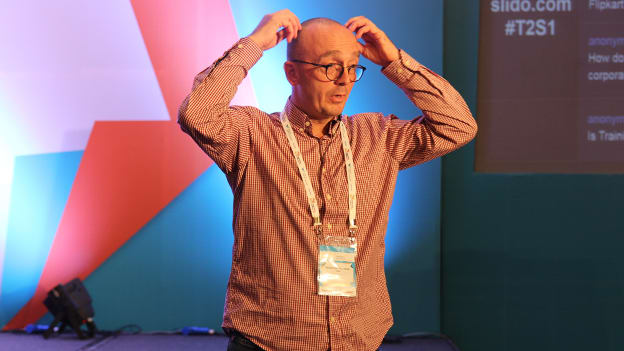21st Century Learning at Flipkart

At the onset of Stefaan van Hooydonk’s session during the L&D League Annual Conference, he declared that although the name ‘Training Department’ was changed to ‘Learning Department’ a few years back, the inherent role and nature of the same has been witnessing a change only recently. Learning today is not just restricted to consumption or transfer of information and knowledge, but sharing, interaction and engagement have become essential parts as well. It is not necessary that the tools and processes that an individual uses to acquire information for personal consumption are also the best or most efficient in training or learning paradigms as well. As has already been established that classroom learning is effective for kids, and not adults as much, it is important to continually challenge, innovate and understand the purpose and medium of learning.
The Flipkart story
Flipkart had a clear identification of the idea, that being a new-age millennial organisation, it had to grow and learn differently. As admitted by Stefaan, the biggest challenge here was to un-learn the traditional and conventional knowledge on learning, which although everybody admits is essential, but few have a practical approach to undertake. Hence, a cultural environment of learning had to be consciously built from the ground with the aim of creating a system that reinvented knowledge from the traditional and conventional methods. This led to coining of ‘I Learn. We Grow.’
The shift from traditional learning interventions to new-age learning exercises has been correctly identified as being a trainer-driven to employee-driven exercise, from being classroom-based to having multiple methods, from being input-driven to being output driven, from measuring efficiency to measuring effectiveness. This shift, which might seem like clever wordplay, finds it roots in the transition that has occurred, and continues to occur, in developing the learning interventions in the corporate world. Today’s learning need not be training or skill based, but can be knowledge based and the focus has shifted from honing an individual to growing together. As a result, the corporate push to be mandatorily trained in certain fields for certain duration of time is converting into a personalised pull to seek information and knowledge. At Flipkart, all these changes were consciously inherent in distinguishing what can be called as a supermarket model (one-size-fits-all approach; with focus on delivery and display) and a boutique model (customised; with focus on the process and journey).
What worked and Why?
Probably a big reason as to why the supermarket model gained traction (right from its inception in the Industrial Age to present times) is a term that every Learner knows all too well: ROI. However, as this event-based learning intervention system makes way for an understanding-based system, it will be measured and studied using new parameters and formula. With the belief that almost 90% of what people learn happens outside the classroom, and the modern workplace learning goes way beyond traditional learning and e-learning, ‘Flipskool’ was envisioned not as a training or skilling centre, but a knowledge and a performance centre. The matrix of the learning requirement of the talent might be squarely divided into ‘demand’ and ‘supply’, but customising it according to the organisation is where one needs to careful. Even at Flipkart, knowledge about retain, supply chain, ecommerce, happiness quotient needs to reach to every part of the organisation – right from strategic, marketing, IT and multimedia. A few low-cost elements of this arrangement which have reaped encouraging results include HBR access to directors, personal learning wallet to pursue a learning based on interest, passion-based communities to facilitate understanding and engagement, Flipster to Flipster (a Flipster is a Flipkart employee) sessions to give everybody a platform to share and interact, and focussing on the impact that all these activities have created.
Leaders and learners need to own their learning, and the effectiveness of the same will follow – in quantifiable statistics and charts, which can further make a case for increasing the scope of the learning intervention. Flipskool presently focuses on employees, but in the long run, it can be a centre for knowledge and excellence for just about anybody – as is the goal.
(This article is based on the session ‘21st Century Learning at Flipkart’ conducted by Stefaan van Hooydonk (CLO, Flipkart) at the L&D League Annual Conference, 2016.)














